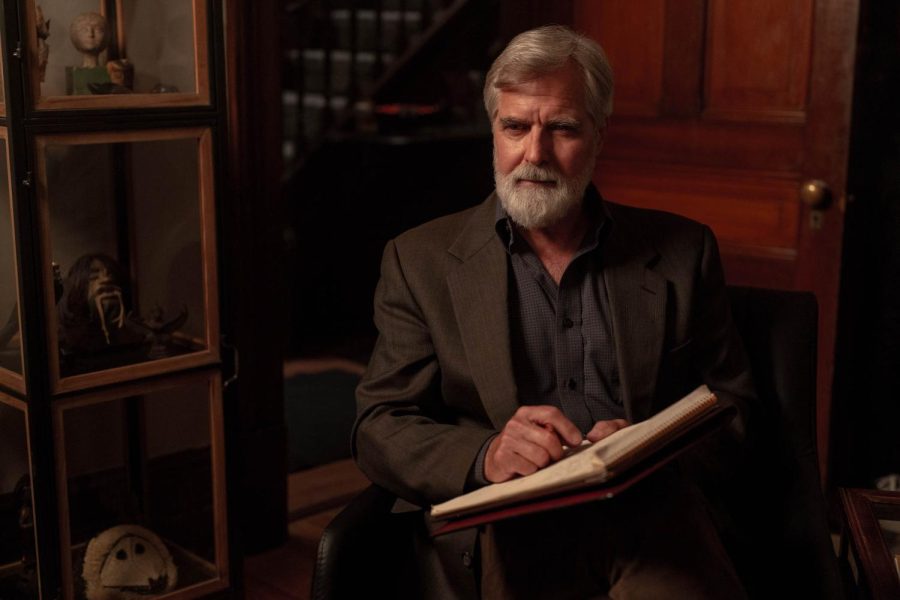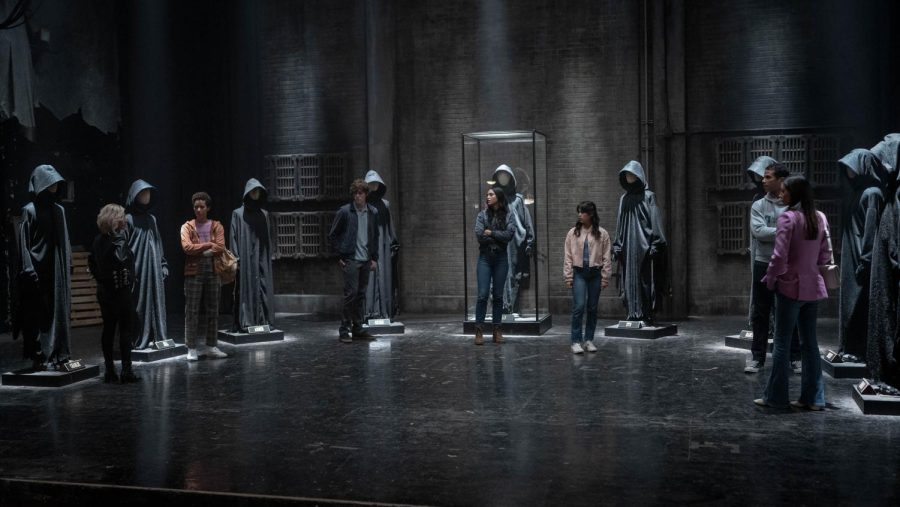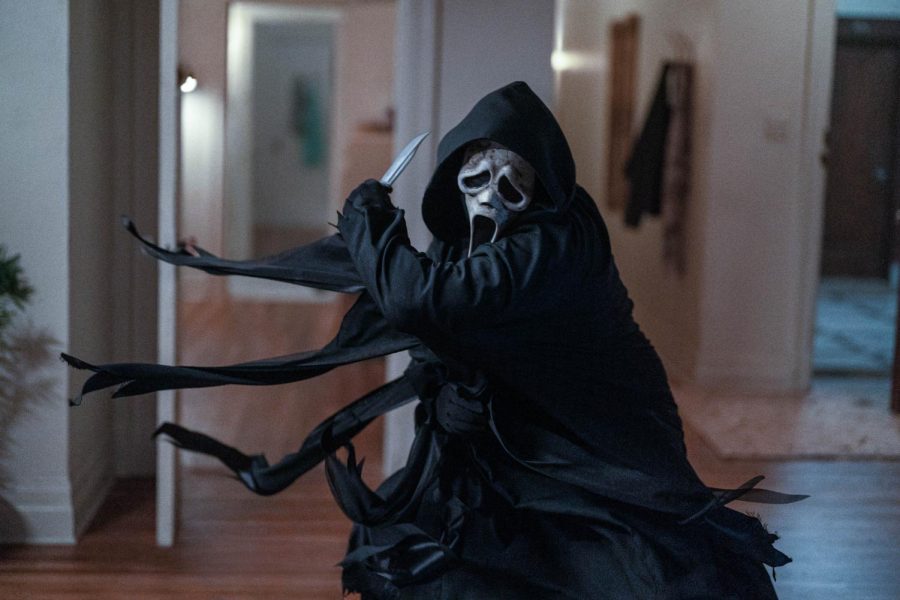A phone ringing, a simple question and a list of rules. That is what makes a Scream movie. The sixth installment of the Scream franchise, directed by Tyler Gillett and Matt Bettinelli-Olpin, released on March 10, follows Samantha and Tara Carpenter and their Woodsboro friends to New York after an encounter with two Ghostface killers in 2022.
The film, similar to its predecessors, attempts to infuse humor into a horror setting — something that the film, to a certain extent, fails at.
“Scream” 1996 through “Scream 4“ and even “Scream” 2022 seemed to have an equal amount of comedy and horror. However, the new installment takes a slightly more serious tone. The typical jokes, one-liners and light-heartedness being at an all time low.
“Scream” 2022, marketed as a remake of the original “Scream” film, ended up being a self-titled requel. It set-up a more serious storyline following the internal and mental health struggles of character Sam Carpenter, played by Melissa Barrera.

The sixth film continues this theme. An early scene depicts a Freudian psychoanalytic session, criticizing the lack of acceptance and knowledge of mental health issues.
This wasn’t the only social construct alluded to. The film, set on a college campus to replicate “Scream 2,” shows the challenges that women face on a campus. Maybe its release during Women’s History Month isn’t coincidental.
Media analysis is another large component of the new film. It continues the tradition of mocking it, something started in “Scream 2.”
Journalistic ethics, through Gale Weathers, played by Courtney Cox, is also brought into question. Gale Weathers is one of the few relics of the original films left in “Scream VI.”
The film seems to be the final resting place for what made the original films iconic, even down to a reduction of knife “ting” sound effects and remastering the traditional Ghostface mask.
Of course cinematography and special effects are more advanced than they were when “Scream” 1996 was released, however the new film brought in similar elements to appeal to the franchise’s original audience.
When Weathers was introduced in “Scream VI” the original film’s score and lighting set-up followed her, something long-time fans could appreciate. However, other than occasional reprisals from the original films, “Scream VI” killed the franchise in more ways than one.

All previous Ghostface killers were reduced to mannequins, or just names and faces on a whiteboard, and the three pillars of the series, Gale Weathers, Dewey Riley, played by David Arquette, and Sidney Prescott, played by Neve Campbell, all became irrelevant by the end of “Scream VI.”
The film plays well as the sequel to “Scream” 2022’s requel, but it fails as the franchise’s sixth installment. “Scream” 2022, made 11 years after “Scream 4,” brought a new cast and a few new structural details, such as allowing the first victim to survive. It also brought a sense of diversity and inclusion to the cast.
The sixth installment follows “Scream” 2022’s ending plot structure and effectively ends the franchise, but the two final films could almost exist in a vacuum. They are so separated from the original four films, both by creative and plot elements. They seem to primarily exist to draw in a new audience and for the sake of reviving a popular horror series, something that is discussed and mocked in “Scream 5.”
Unfortunately these new elements leave little space for the old characters, killing off Arquette’s character in the previous film.
The sense of home that was created by the early franchise was destroyed, however if you view “Scream” 2022 as the first movie of a new era, its 2023 sequel maintains form. The only true legacy from the original films was the idea of killers imitating killers imitating killers.
Another theme that “Scream VI” stays true to is the idea of allusionism. The series was built to make fun of horror films, and the sixth film does this well by directly referencing multiple horror films such as “It,” “Friday the 13th,” “The Shining” and non-horror films such as the “Star Wars” franchise.
There is also a scene in every film that establishes the rules for the movie. The first films had rules regarding being a typical horror film, the second about being a sequel and the third about being a trilogy. The sixth is no different. While most rules change, one stays constant, that “everyone is a suspect.”

“Scream VI” elaborates on this idea, suggesting legacy characters may be suspects, and that everyone could be victims, even main characters. The film alludes to multiple possible endings that would be new. Even bringing up the possibility that an old killer could come back to exact revenge, but as it drew to an end, it fell into line with the endings of every film before it.
The killers’ coordination and motive is the same as all other Scream films. Despite how hard writers James Vanderbilt and Guy Busick tried to subvert expectations.
Maybe there should have been a couple more rules in “Scream VI”: One, the characters should learn to change their ringtones to something unique, maybe they won’t get killed; and two, the creators shouldn’t forget about their original audience, they are what made Scream.
Ariana Powell can be reached at orionmanagingeditor@gmail.com.








